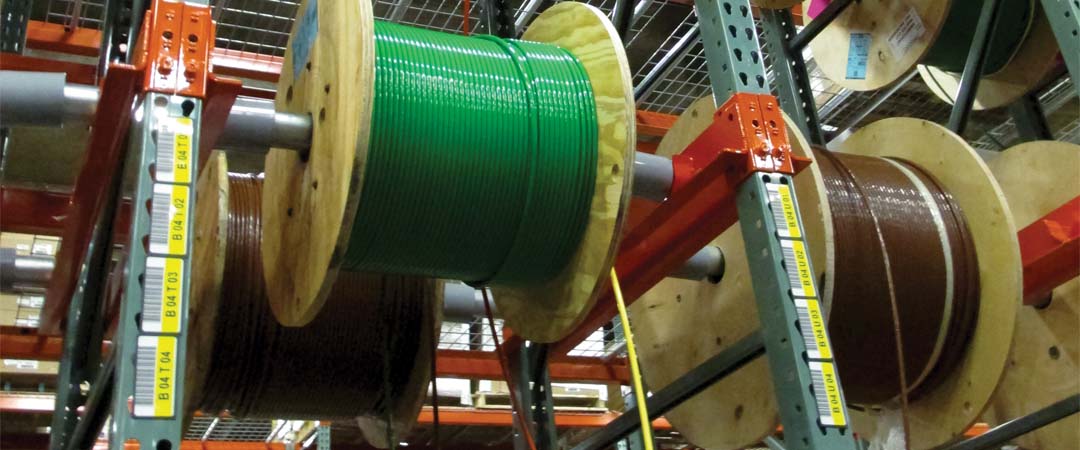By Casey Schmidt, Category Director – Commodities

For any project, choosing the right cable is essential. The wrong wire may not match the proper standard or just be a poor long-term option compared to other cables. Whatever the issue, it’s important for electricians to choose not only the most appropriate cable for the job, but also the best overall option.
Basic low-voltage cable construction
Gone are the days of simple wires, and in their place are cables made up of multiple essential parts, including conductors, shielding, insulation and jackets.
Conductors
Conductors can be a variety of materials, but copper, tinned copper and aluminum are the most common. They can either be solid or stranded. Solid conductors are less flexible, easier to solder and easier to terminate, while stranded conductors have better frequency capabilities and are more flexible.
Conductors range in size with diameters of 0.0201 inches (24 AWG) to 0.0808 inches (12 AWG), and they can either be parallel, cabled or paired inside the cable. Parallel conductors lay next to each other with no twisting, while cabled conductors are twisted together and covered by a jacket. Paired means conductors are twisted together in pairs.
Shielding
There are three types of shielding: foil, braid and combination. Foil shielding protects against radio frequency interference while braided protects against electromagnetic interference. Combination shielding offers protection from both.
Insulation
Cable insulation separates the conductors within the cable. Insulation can be solid, foam or semisolid, but solid is the most common. Insulation protects cable from electrical loss, extreme low and high temperatures, ultraviolet rays, abrasions and cuts.
Jackets
Cable jackets physically protect the internal parts of the cable from external issues. Jackets are either thermoplastic materials, such as PVC, polyethylene, polypropylene, FEP and polyurethane, which melt when they get hot, or thermoset, including natural rubber, SBR, neoprene, EPDM and silicone rubber, which are cured with heat and won’t melt at high temperatures.
Jackets come in five varieties: tubed, zip/parallel, Siamese, semi-extruded and WaveFLEX. Tubed is the most common type of jacket and zip/parallel is when rugged insulation doubles as the jacket. Siamese jackets are when two cables are combined into one. Semi-extruded jackets are flexible and conformed around the conductors, providing a more rounded shape compared to tubed jackets. WaveFLEX is an ultra-flexible option used on coaxial and Audacious audio cables.
Importance of Categories, Ratings and Listings
Depending on the type of conductors, shielding and jackets, cable can have different ratings and listings. All cabling must meet specific government standards to be advertised as certain categories, ratings and listings.
The National Electrical Code rates cable so electricians know when the various types can be used and provides a clear substitution hierarchy. Various articles of the NEC state which cables are appropriate for remote control applications, signaling, fire alarm systems, communication circuits, TV and radio systems and more.
Different rates describe where cable can be placed. Plenum-rated cable can be installed in ducts or environmental air spaces. Riser-rated cable is used for vertical projects that run multiple floors. General purpose cable can be installed in conduit or raceways on a single floor.
Categories of cable describe the product’s frequency standard. Category 5e cable has a standard frequency of 100 megahertz (MHZ), category 6 cable has a standard frequency of 250 MHz and category 6A has a standard frequency of 500 MHz.
For each project, electricians must know which cable matches the category and/or rating they need.
Look out for fakes
A basic knowledge of cable is important for identifying counterfeit cable, which is wire sold and billed as meeting safety and performance standards when it actually doesn’t.
Counterfeit wire can bare fraudulent marks, making it hard to notice. Electricians should carefully review the packaging of cable they order as well as the construction of the cable itself. Additionally, working with a trustworthy partner like Border States ensures electricians only receive top-of-the-line products.
Read more:
Why You Can’t Afford Not to Use Parallel Wire Reels
What is PLTC Cable? The Best Applications for Instrumentation Tray Cable
TC-ER and Direct Bury Cable: What are the Differences?